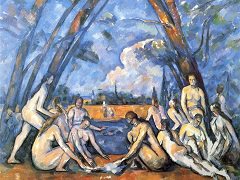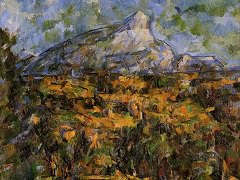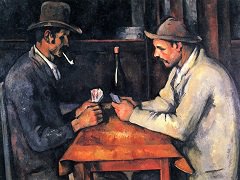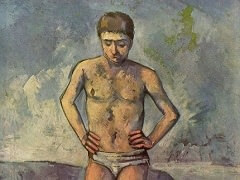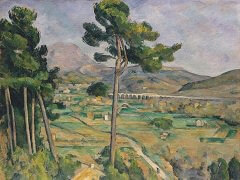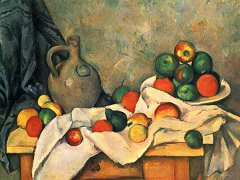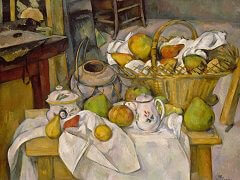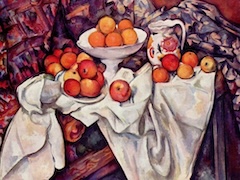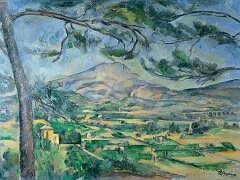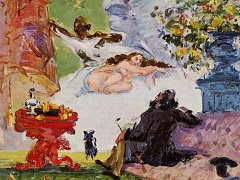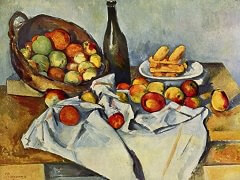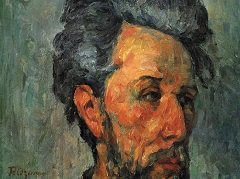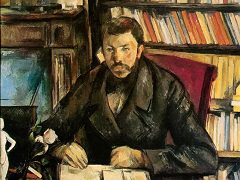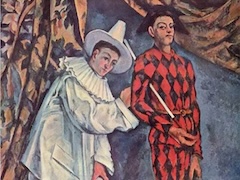Madame Cezanne with Unbound Hair - by Paul Cezanne
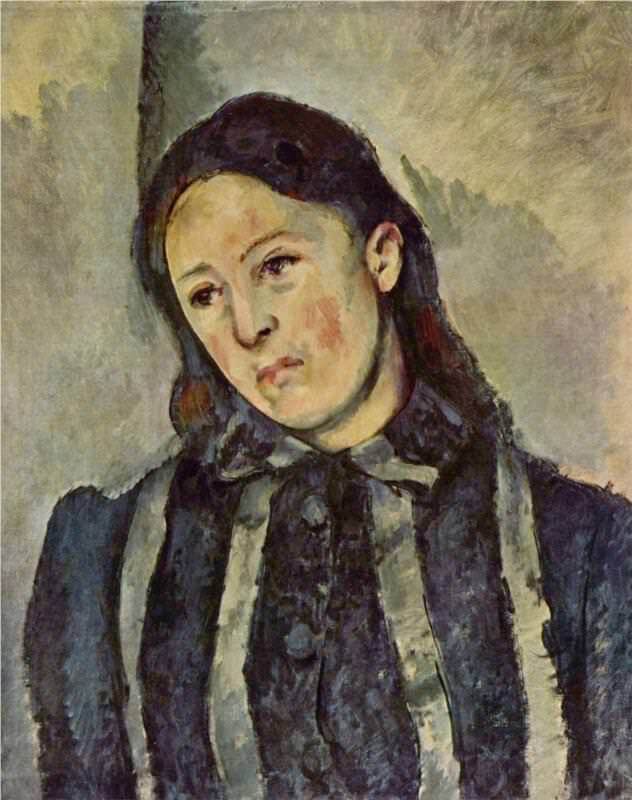
The pure oval of the face, its vague eyes and lips, and the cool tones of the painting, suggest a detached, abstract conception of the model. Yet it appears to us a very human portrait, sensitive to the passive and frail in this feminine nature - traits conveyed by delicate means. In the light key, with the almost shadowless face against a light ground, in the exquisite relation of the warm and cool tints of the face to the greyer wall, the painting is Impressionist in spirit. In the Impressionist portraits the inner life of the woman is often overlooked for the sake of an outward charm that requires an open smiling face and features like blossoms. In retaining from this art the softness of the features and the beauty of the skin, Cezanne has produced a tender image of ascetic feeling. It is as if he transferred to his wife his own repression and shyness. Characteristic is the pathetic inclination of the head, an axis of weakness, submission, and self-concern, such as we find in old images of praying and penitent saints - an expression which is completed by the extreme closure of the body, with the high striped dress and the loosened hair falling to the shoulders. The remarkable egg shape of the head is no simple reduction of a more complex form, but a subtle line expressive of the object, an approach to the perfection of a refined, withdrawn nature. This beautiful contour of the face corresponds to the eggshell delicacy of the flesh tones it encloses.
In the creation of this portrait, the added forms that assure the unity of the painting are also expressive parts of the image of Madame Cezanne. The important spot over the head, irregular on one side, straight on the other, like the stripes of the dress, belongs more to her than to the wall; in balancing the head, this vertical form also helps to measure its tilt and the waviness of the hair and costume. On the right shoulder at the sleeve, the odd little puff continues the movement of the hair and accents the inclination of the head. The bands of the dress contribute a soft, wavering current of feeling channeled to the head and prolonged in the silhouette of the hair.
This expressive use of posture, costume, and background recalls the devices in pictures of religious personalities in late mediaeval art, when portrait painting was just beginning to emerge.

